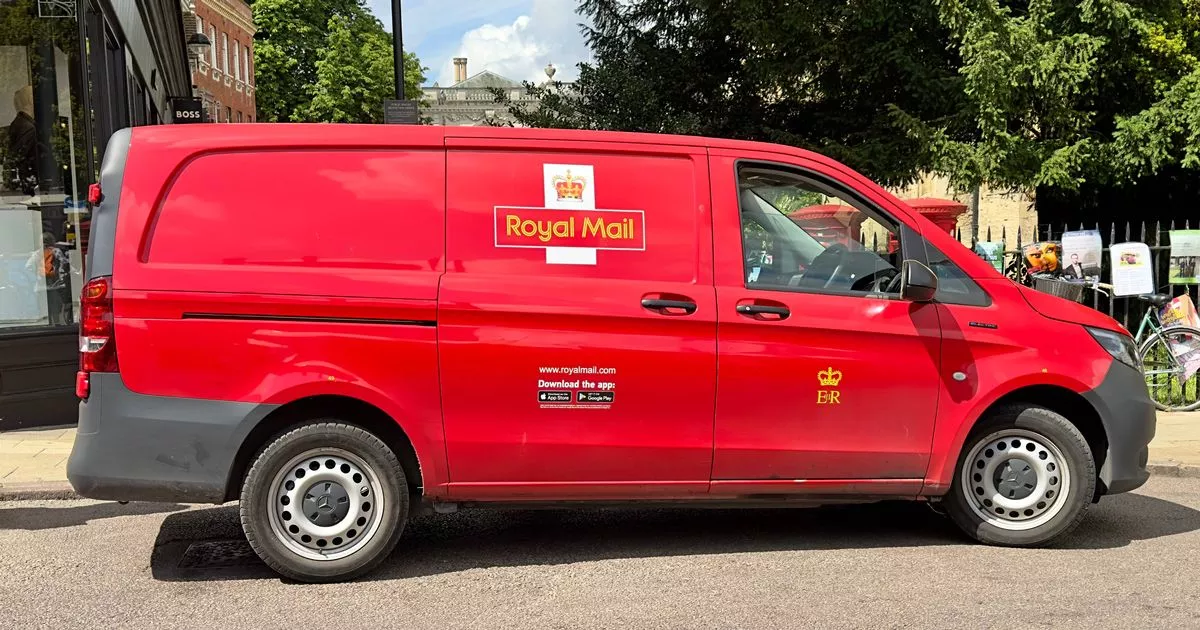A young woman has gone viral after speaking out about falling victim to a scam that saw her lose “every penny” she had. Emmeline Harltey, a student and actor, shared her experience of receiving a text from con artists posing as the Royal Mail, which then lead to the scammers calling her and pretending to be from her bank, Barclays.
Posting the full story on her Twitter account, in the hopes of warning others, Hartley wrote: “I mentioned yesterday that I’d been scammed out of every penny I had. Thought I’d post what happened in case it helps anyone avoid being in the same position. Please save the lectures, I don’t think it’s possible for me to feel any stupider #royalmailscam #safeaccountscam”.
She then explained that because her birthday was approaching, when she received a text from ‘Royal Mail’ claiming that she needed to pay £2.99 in order to receive a parcel, that she believed it was legitimate. Hartley says she even checked the Royal Mail’s website, before deciding it was safe and entered her bank details.
A couple of days later, Hartley says she was contacted by ‘Barclays’ saying that somebody had tried to set up direct debits in her name to Vodafone, Currys/PC World and that an attempt to spend £300 on Argos products had been made.
This content is imported from Instagram. You may be able to find the same content in another format, or you may be able to find more information, at their web site.
“The next bit is going to sound stupid, but I was so embarrassed by my stupidity of falling for the Royal Mail scam, shocked and scared that somebody had been trying to use my card,” Hartley says, before explaining that because the man on the other end of the phone knew so many details about her, that she thought it was a legitimate call from her bank – so she transferred all the money she had into her new ‘safe account’.
“This guy was plausible, professional and understanding and I just fell for it,” she says, according to a BBC report. The person on the other end of the phone then said that because Hartley had entered her banking information following the fraudulent Royal Mail text that she’d need to transfer all of her money into a new account in order to keep it protected, while waiting for a new card to be issued.
Hartley also notes in her tweet that she even checked the number the scammer was calling from and it showed online as being the same number as the Barclays fraud team, showing just how sophisticated and hard to spot these scams can really be.
This content is imported from Twitter. You may be able to find the same content in another format, or you may be able to find more information, at their web site.
It was after being told to also clear her overdraft (which she did not have), Hartley says she began to realise something wasn’t right. “Despite knowing deep down that something wasn’t right, I tried to transfer the sum of money he told me to transfer,” she recalls. “It didn’t work, confirming what I guess I already knew. I broke down in tears and he hung up.”
Hartley then called the real Barclays bank, who explained the scam she’d been duped into believing is unfortunately a popular one. “After several hours [on the phone to my actual bank], they’d cancelled my cards, issued new ones and launched an investigation into my fraud claim,” she adds. “They said that this a very common scam known as the ‘safe account scam’.”
A spokesperson for Barclays told Cosmopolitan, “Following an investigation of this case, it is evident that our customer has been the unfortunate victim of a very sophisticated scam. We have provided the customer with a full refund of the amount that was lost.”
The spokesperson continued, “Fraudsters try to appear as legitimate as possible, so it’s important to be vigilant and stay alert to anything suspicious. No genuine bank would message you to transfer money to a ‘safe account’ – we advise any customers to ignore anyone who asks to do this, whether it’s by phone, email or any other method.”
Spot the signs of a scam
Barclays Digital Eagles help people build digital confidence and stay safe online. Here are their top tips to avoid becoming victim to a scam:
- Your bank and the police will never ask you to hand over your PIN, cards or cash, buy high-value items or transfer funds to a new account. If someone calls asking you to do this, end the call.
- Do not click on any link or open an attachment on any e-mail you receive which is unsolicited.
- Avoid letting someone you do not know have access to your computer, especially remotely.
- Check that the phone number is genuine. You’ll find company telephone numbers on bills, statements or their website. For Barclays numbers, you can use our telephone number checker to see if you’re being contacted by a genuine Barclays number. If in any doubt, end the call and contact the company on a number you have verified and can trust.
- Don’t rely on the caller display on your phone or SMS messages pertaining to be from your bank – fraudsters can manipulate these. Just because the number on the back of your card is the same, it doesn’t mean it’s the bank calling
- Trust your instincts, if it sounds too good to be true, it probably is. Equally, if it doesn’t seem quite right, it’s probably not.
- Check that the website is secure and read reviews. Before you enter any sensitive information (such as payment details), look for ‘https’ at the start of the website address – and a padlock or key icon next to the address bar on your device.
- Take your time and don’t be rushed. It is important to remember that if it doesn’t feel right, then it most likely isn’t. Spending five more minutes to think through what’s happening or speak to someone you trust may just make a difference.
- Don’t be embarrassed to report a scam. Scammers are cunning and clever there is no shame in being deceived. By reporting you will make it more difficult for them to deceive others.
Cosmopolitan UK’s current issue is out now and you can SUBSCRIBE HERE.
Like this article? Sign up to our newsletter to get more articles like this delivered straight to your inbox.
This content is created and maintained by a third party, and imported onto this page to help users provide their email addresses. You may be able to find more information about this and similar content at piano.io
Source link


